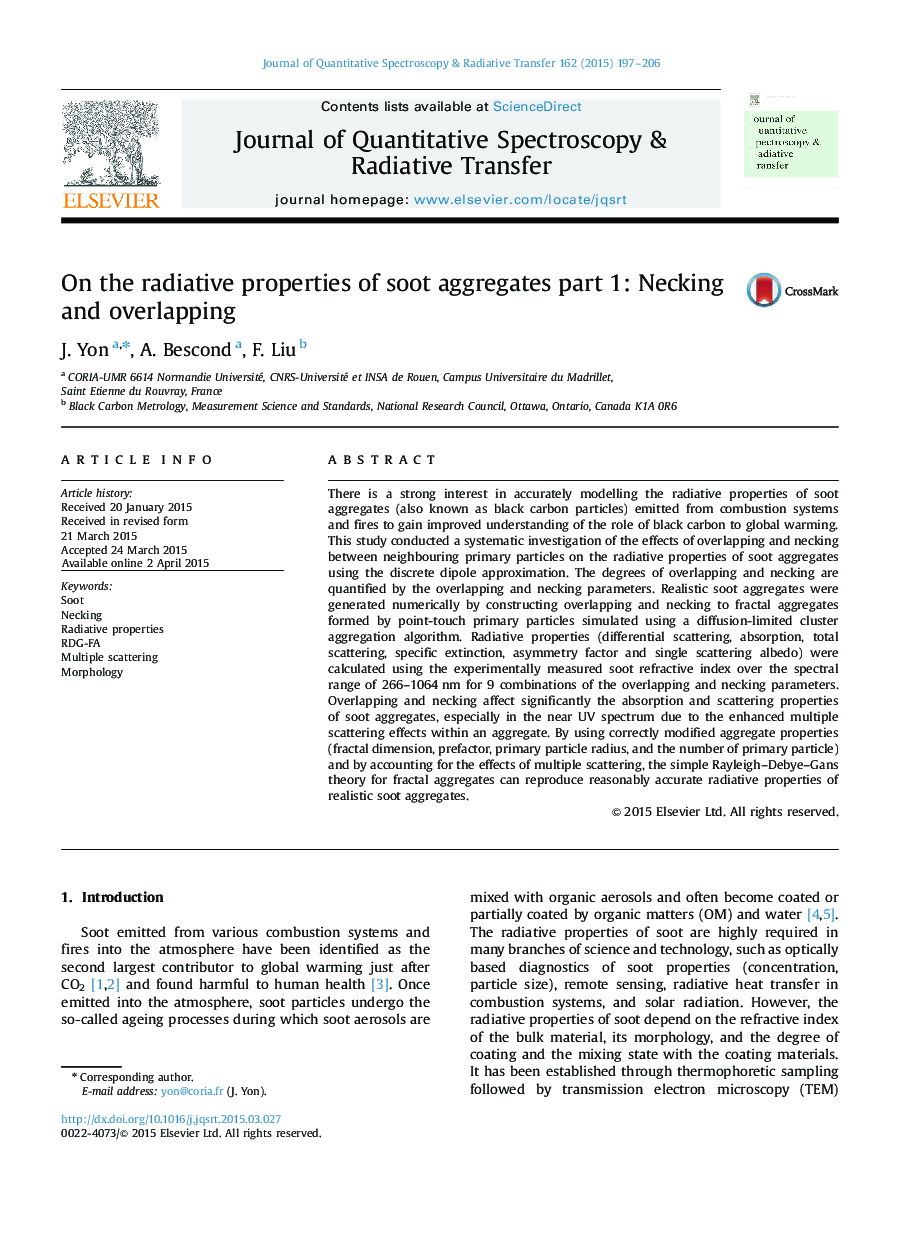| Article ID | Journal | Published Year | Pages | File Type |
|---|---|---|---|---|
| 5427913 | Journal of Quantitative Spectroscopy and Radiative Transfer | 2015 | 10 Pages |
â¢We determine the radiative properties of realistic virtual soot aggregates.â¢We consider the primary sphere polydispersity, their necking and overlapping.â¢Scattering and absorption are decreased by considering these effects in the UV.â¢The single scattering albedo and asymmetry factor are also deeply affected.â¢These effects can be integrated in RDG-FA theory.
There is a strong interest in accurately modelling the radiative properties of soot aggregates (also known as black carbon particles) emitted from combustion systems and fires to gain improved understanding of the role of black carbon to global warming. This study conducted a systematic investigation of the effects of overlapping and necking between neighbouring primary particles on the radiative properties of soot aggregates using the discrete dipole approximation. The degrees of overlapping and necking are quantified by the overlapping and necking parameters. Realistic soot aggregates were generated numerically by constructing overlapping and necking to fractal aggregates formed by point-touch primary particles simulated using a diffusion-limited cluster aggregation algorithm. Radiative properties (differential scattering, absorption, total scattering, specific extinction, asymmetry factor and single scattering albedo) were calculated using the experimentally measured soot refractive index over the spectral range of 266-1064Â nm for 9 combinations of the overlapping and necking parameters. Overlapping and necking affect significantly the absorption and scattering properties of soot aggregates, especially in the near UV spectrum due to the enhanced multiple scattering effects within an aggregate. By using correctly modified aggregate properties (fractal dimension, prefactor, primary particle radius, and the number of primary particle) and by accounting for the effects of multiple scattering, the simple Rayleigh-Debye-Gans theory for fractal aggregates can reproduce reasonably accurate radiative properties of realistic soot aggregates.
